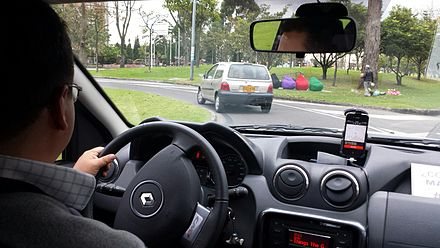

Llwelleyn King: Good reasons to venerate the gig economy
Professional dog walker
WEST WARWICK, R.I.
Napoleon didn’t deride the English as “a nation of shopkeepers,” although that phrase is commonly attributed to him. In fact, it was Bertrand Barère de Vieuzac, a French revolutionary who used it when attacking the achievements of British Prime Minister William Pitt, the Younger.
I think that Napoleon was too smart not to have realized that a nation of shopkeepers is a strong nation, and that if the English of the time were indeed a nation of shopkeepers, they would constitute a more formidable enemy.
A nation of shopkeepers, to my mind, is an ideal: self-motivated people who know the value of work, money and enterprise; and who are almost by definition individualists. So, I regret the constant threats to small business coming from chains, economies of scale, high rents and some social stigma.
But mostly I regret that in our education system, self-employment isn’t celebrated and venerated as being equivalent to work at larger enterprises. We define too many by where they work, not by what they do.
I have always believed that one should aspire to work for oneself, to eschew the temptations of the big, enveloping corporation and to strike out with whatever skills one has to test them in the market and to have the customer, not the boss, tell you what to do.
Our education system produces people tailored to be employed, not self-employed.
But things are changing. The gig economy was well underway before the COVID-19 pandemic hit, and now it is roaring. Many employees found that the servitude of conventional employment wasn’t for them.
The gig world differs from the small business world that I have described in that it is small business refined to its absolute core: a one-person business, true self-employment.
There are many advantages in self-employment for society and for the larger business world. Hiring a self-employed contractor is easier for a company, not having to create a staff position and pay all the costs that go with it. Laying off a contractor isn’t as traumatic. The worker is more respected, and is asked to do things not commanded. The system gains efficiency.
But if employers come to see the gig economy as just cheap, dispensable labor, then the gig economy has failed.
The gig worker shouldn’t expect security but should be treated in a business-to-business environment. He or she needs to know how to drive a bargain and to have the moral courage to ask for a contract that is fair and recognizes the value that is intrinsic in the gig relationship.
I am a fan of Lyft and Uber. They offer self-employment to anyone with a driver’s license and a car — and the companies will even get you into a car. But the bargain is one-sided. The driver has the freedom to work what hours he or she chooses but not to negotiate the terms of their engagement. That is decided by a computer in San Francisco.
This gig worker can’t hope to hire other drivers and start a small business: It doesn’t pass the gig contract concept. I have talked to many ride-share drivers. They revel in the freedom but not the income.
Gig workers can be, well, anything from a plumber to a computer programmer, from a dog walker to an actuary.
But for the free new world of gig working to become part of our business fabric, the social structure needs to be adjusted by the government to allow for the gig worker to enroll in Social Security and to charge expenses against taxes as would an incorporated business. Jane Doe, who makes a living designing websites, needs to know that she is a business, not just freelancing between jobs.
A friend who has been self-employed for many years told me recently that he was being considered for a big staff job. I told him to be mindful that he will be trading away some dignity and a lot of freedom. It is hard to get into a harness when you have been running free.
I hope we get many more workers running free. Napoleon would have understood.
On Twitter: @llewellynking2
Llewellyn King is executive producer and host of White House Chronicle, on PBS. He’s based in Rhode Island and Washington, D.C., and his email is llewellynking1@gmail.com
White House Chronicle
Whining Uberites & Lyftites
Adapted from Robert Whitcomb's "Digital Diary,'' in GoLocal24.com:
The complaints from car-hailing services and their passengers about the $6 pickup fee at T.F. Green Airport, in Warwick, R.I., ring hollow to me. Jim Hummel wrote about this in a good Jan. 28 Providence Journal story, “Driving revenue: Price of arrival rises at T.F. Green’’. All users should help pay for the airport, which has been much improved in recent years. Uber and Lyft have taken away some of the airport’s revenue from rental cars and taxis. It’s generally cheaper to take a car-hailing service than a ca b. Further, many airports charge to drop off and pick up passengers.
As usual, people want more services but lower charges. Take the federal gasoline tax. It was last raised in 1993! No wonder the roads are such a mess. And while Trump talks about improving transportation infrastructure, he got Congress to enact a huge tax cut, mostly for business and the rich. America remains a fiscal Fantasyland.
Llewellyn King: Rooftop solar energy burns the poor
Leon Trotsky said, “You may not be interested in war, but war is interested in you.” The same thing might be said about disruptive technologies.
The U.S. electric system, for example, may not be interested in disruptive technology, but disruptive technology is interested in it. What Uber and Lyft have done to the taxi industry worldwide is just beginning to happen to the electricity industry; and it could shock consumers – particularly the less affluent – as surely as though they had stuck their finger in an electrical outlet.
The disruptive revolution is not only happening here, but also in Europe, as Marc Boillot, senior vice president at Electricite de France (EDF), the giant French utility, writes in a new book.
Ironically in the United States, disruption of the otherwise peaceful world of electric generation and sale last year was a bumper one for electric stocks because of their tradition of paying dividends at a time when bond yields were low.
The first wave of disruption to electric generation has been a technology as benign as solar power units on rooftops, much favored by governments and environmentalists as a green source of electricity. For the utilities, these rooftop generators are a threat to the integrity of the electrical grid. To counter this, utilities would like to see the self-generators pay more for the upkeep of the grid and the convenience it affords them.
Think of the grid as a series of spider webs built around utility companies serving particular population centers, and joined to each other so they can share electricity, depending on need and price.
Enter the self-generating homeowner who by law is entitled to sell excess production back to the grid, or to buy on the grid when it is very cold or the sun isn't shining, as at night. The system of selling back to the electric company is known as net metering.
Good deal? Yes, for the homeowner who can afford to install a unit or lease one from one of a growing number of companies that provide that service. Lousy deal for the full-time electricity customer who rents or lives in an apartment building.
There’s the rub: Who pays the cost of maintaining the grid while the rooftop entrepreneur uses it at will? Short answer: everyone else.
In reality, the poor get socked. Take Avenue A with big houses at one end and apartments and tenements at the other. The big houses -- with their solar panels and owners' morally superior smiles -- are being subsidized by the apartments and tenements. They have to pay to keep the grid viable, while the free-standing house – it doesn’t have to be a mansion -- gets a subsidy.
It's a thorny issue, akin to the person who can't use Uber or Lyft because he or she doesn’t have a credit card or a smartphone, and has to hope that traditional taxi service will survive.
The electric utilities, from the behemoths to the smallest municipal distributor, see the solution in an equity fee for the self-generating customer's right to come on and off the grid, and for an appreciable difference between his selling and buying price. Solar proponents say, not fair: Solve your own problems. We are generating clean electricity and our presence is a national asset.
EDF's Boillot sees the solution in the utilities’ own technological leap forward: the so-called smart grid. This is the computerization of the grid so that it is more finely managed, waste is eliminated, and pricing structures for homes reflect the exact cost at the time of service. His advice was eagerly sought when he was in Washington recently, promoting his book.
While today’s solar may be a problem for the utilities, tomorrow’s may be more so. Homeowners who can afford it may be able to get off the grid altogether by using the battery in an all-electric car to tide them over during the sunless hours.
The industry is not taking this lying down: It is talking to the big solar firms, the regulators and, yes, to Elon Musk, founder of electric-car maker Tesla Motors. He may be the threat and he may be the savior; those all-electric cars will need a lot of charging, and stations for that are cropping up. There’s a ray of sunshine for the utilities, but it's quite a way off. Meanwhile, the rooftop disruption is here and now.
Llewellyn King (lking@kingpublishing.com), a longtime publisher, journalist and international business consultant, is executive producer of "White House Chronicle,'' on PBS.
Sam Pizzigati: Let holiday heart go out to the Uber-greedy
Peace on Earth, good will toward men. We honor these noble values every holiday season — and some people actually work to advance them all year long.Other folks, by contrast, mock these values. They spend their days chasing after ever grander stashes of personal treasure.
These greedy souls love the shadows. So a few years back, the inequality weekly I edit for the Institute for Policy Studies began publishing an annual list of America’s top ten greediest. I’ve just introduced this year’s list, bringing tales of plutocrats young and old.
The oldest character on it: the 79-year-old Wall Street mover and shaker Ken Langone.
Langone began making headlines right at the start of 2014 with his advice for Pope Francis. The pontiff, he told New York’s archbishop, should cool it on the inequality front. Papal broadsides against “the powerful feeding upon the powerless,” Langone complained, could leave America’s wealthy “incapable of feeling compassion for the poor.”
Langone himself has always been a generous sort — at least for his friends. As a New York Stock Exchange director, he greased the skids for a $190-million exit package for his buddy, NYSE president Richard Grasso, in 2003
Langone has been a bit less generous to the powerless. As a director at Yum! Brands, the home of Taco Bell and KFC, he cheered on company efforts to oppose hikes in the minimum wage. As he likes to tell regulators: “Leave us alone and let us hire people.”
Home Depot, the retail giant Langone’s financing helped propel to big-box dominance, shows what happens when you leave corporations alone. Big-box giants, notes the research group Good Jobs First, don’t create jobs. They “grow mostly at the expense of existing competitors,” many of them local businesses.
Big-box giants, on the other hand, do create massive concentrations of personal wealth. Forbes now estimates Langone’s net worth at $2.6 billion.
Among the youngest of America’s 2014 top ten greediest: the 38-year-old Travis Kalanick, the CEO and cofounder of Uber, a taxi-like service that lets travelers hail cars through a mobile phone app.
Last January, Uber was running cars in just 60 cities. Now it’s spread to 250 cities — in 50 countries. That growth has propelled Uber’s worth to $40 billion — more than long-established transportation heavyweights like Hertz and United Continental.
Not bad for a company, the AP notes, “that didn’t exist five years ago.” And Kalanick himself, Forbes estimates, is ending the year worth a cool $3 billion.
How has Uber soared so quickly? The company is pumping up profits, critics charge, by taking short cuts like not running adequate background checks on drivers. Officials in Los Angeles and San Francisco have just filed suit against Uber on driver- safety checks, and governments from Spain to India have also taken legal action against the company.
Other critics include customers like Leah Kappen of Indianapolis. She took an Uber ride downtown to the Dec. 6 Big Ten football championship game. That ride cost her $30. The 18-minute trip home after the game cost her $450. This past Halloween, an 18-mile ride home ran New Yorker Elliott Asbury $539.
Uber’s “surge pricing” — a policy that ties rates to the supposed market demands of the moment — generated these outsized fees. But anyone upset by $500 cab fare, says Kalanick, needs to start “getting used to dynamic pricing in transportation.”
Uber drivers are complaining, too. One of Uber’s competitors, Lyft, gives all the extra profit from “surge pricing” to its drivers. Uber takes a 20 percent cut. Why not, The Wall Street Journal asked Kalanick, follow suit?
“We are a business,” he replied.
So much for good will.


